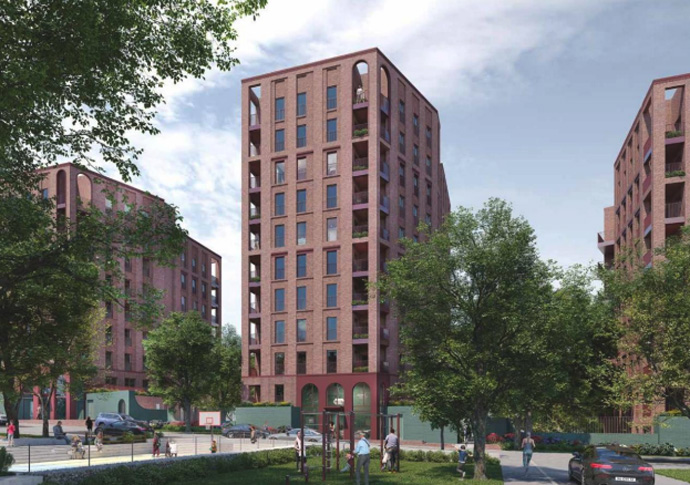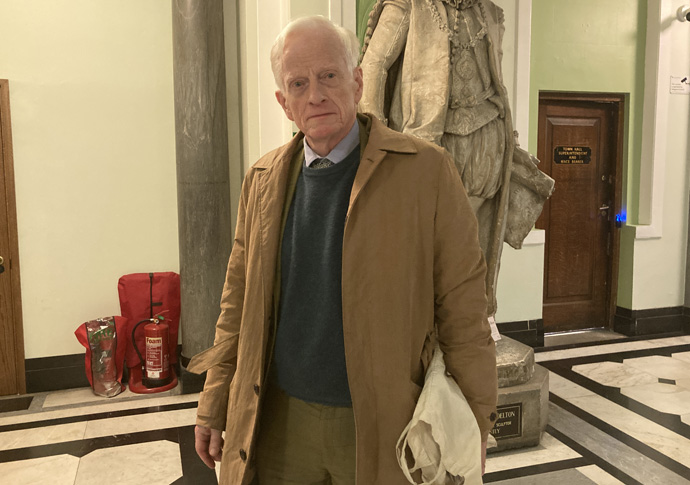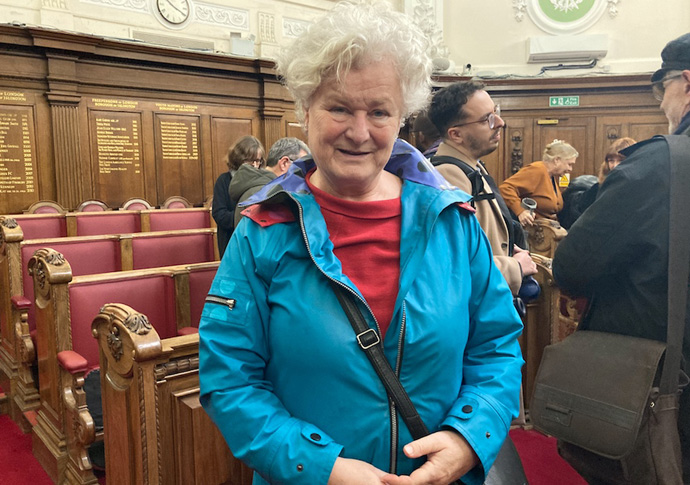Ten-year estate ‘transformation’ gets the go-ahead – and a mixed reaction
Hundreds of residents affected by one of the largest redevelopment schemes in a generation
Friday, 2nd December 2022 — By Anna Lamche

An artist’s drawing of how the dramatic changes to the New Barnsbury Estate could look in 10 years
AN estate is set for a complete “transformation” after being given the green light by planning bosses this week, in one of the borough’s largest redevelopment schemes in a generation.
New Barnsbury Estate, part of the larger Barnsbury Estate that sits between King’s Cross and Angel, is set to be demolished and rebuilt after proposals were approved by the planning committee on Tuesday night.
Barnsbury Estate is divided into “New Barnsbury”, made up of 371 homes built in the post-war period, and “Old Barnsbury”, comprising 275 homes built before the war.
Under the newly approved plans, New Barnsbury will be entirely demolished and replaced by 914 new homes, almost tripling the density of people living on the site. The developer plans to build several tall buildings of seven, nine and 11 storeys, some of which will break the council’s 30-metre height rule. Just under half of these new homes will be offered for social rent.
At the council meeting on Tuesday night, residents in the upper gallery clapped when the council gave permission to Newlon’s plans, which it will deliver alongside property developer Mount Anvil over a 10-year period, with work starting in March next year.

Ayan Awale (centre), Nadia Noryaly and Hodan Adan are among those backing the plans
New Barnsbury resident Ayan Awale, who lives with her husband and three young children on the estate, spoke in favour of the scheme.
“Some of the problems in New Barnsbury that we have at the moment include damp in the buildings, unusable wasteland areas… poor lighting, overcrowding,” she said.
Under the plans, those living in social housing will be offered replacement homes once the new development is built. Leaseholders will have their current flats bought from them and will be given the first chance to buy back into the estate once building work is complete, according to chair of the planning committee, Cllr Martin Klute.
The building project will be phased over a period of roughly 10 years, with each household decanted into temporary accommodation while their blocks are demolished and rebuilt.
Arsenal councillor Bashir Ibrahim was the only councillor not to vote in favour of the plans, calling instead for the decision to be deferred. “I’m just worried about the precedent this sets for developments in Islington. We are permitting tall buildings that go against our policies,” he said.

James Dunnett, of the Islington Society, said green space per resident would be reduced by some 60 per cent
According to council estimates, the plan to build 46 per cent affordable homes will leave Newlon in a £19m deficit, which the housing association will attempt to recuperate through increasing the value of private homes for sale.
St Mary’s and St James’ councillor Hannah McHugh asked planning officers: “Are you absolutely satisfied that the applicant will be able to see this project through to completion?”
Mount Anvil CEO Killian Hurley said: “We have sufficient resources to start and to complete this scheme.”
The application received 77 objections and 204 letters of support. Architect James Dunnett, of the Islington Society, raised concerns about the proportional loss of green space on the estate.
“Whilst in this case the applicant claims that the amount of green surface in the New Barnsbury Estate will remain constant, it will be reduced by 60 per cent per head due to increased resident numbers,” he said.

Alic ter Meulen objected over concerns her solar panels would be overshadowed by the tower blocks
There are also concerns that the new estate will not be maintained properly by Newlon, continuing an alleged pattern of neglect currently at work on the estate.
“The estate has been purposefully run down by Newlon. Completed blocks will then be insufficiently maintained by Newlon,” reads one objection listed in planning documents.
While councillors acknowledged problems with the scheme – including a loss of retail space on the side of the development facing onto Caledonian Road, the carbon footprint of demolition and overshadowing caused by tall buildings – many said they were convinced by the “uplift” in social homes created by the scheme.
Islington currently has 14,000 people on the council homes waiting list, and the local Labour party has pledged to deliver “at least” 1,550 new affordable and social rent homes by 2026.